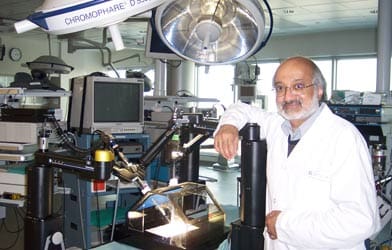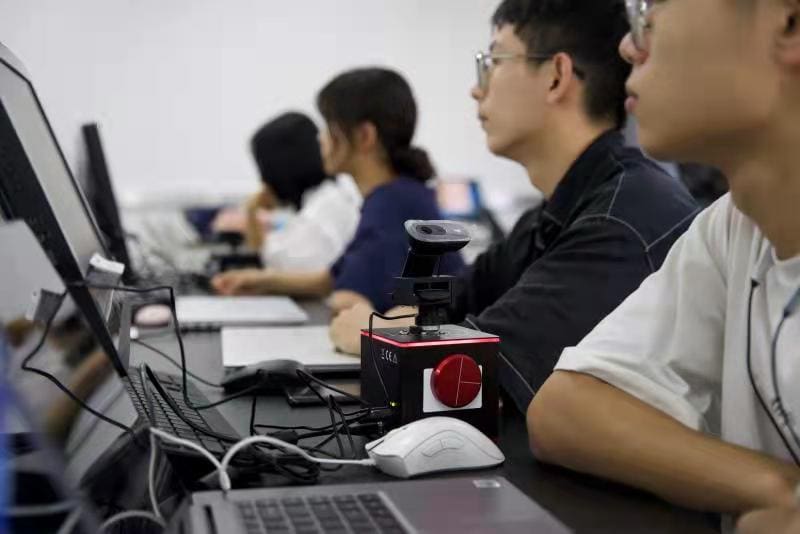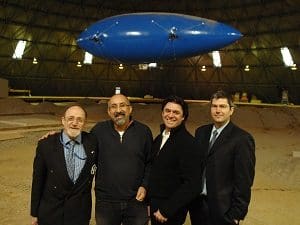
An intensely dynamic and productive engineer, Dr. Rajni Patel of the Western University is constantly reinventing processes to make sense of his world. His research projects focus on the application of robotics in medicine, specifically in minimal invasive surgery and therapy. Dr. Patel regularly crosses traditional academic boundaries. He’s the main architect of the blending of engineering and medicine at the Western University. It was in this capacity as a multidisciplinary researcher that he found himself in a far-reaching collaboration with the team at Quanser, known for its enthusiasm for engineering innovation. They shared his keen interests in robotics and haptics.
Challenge
Putting surgeons and surgical robots 'in touch'
Dr. Patel is leading a project incorporating haptics in minimal invasive surgical training. Very early on in the project his team realized that the sense of touch- haptics – has a vital role in the design of surgical training systems.
“One of the difficulties with current robotics systems for the minimal invasive surgery is that there is no haptics, no sense of touch. In other words, using the robot, there is a nice 3D view of what’s inside the patient, but there is no sense of touch between the instrument and the tissue that they are working on.”
His challenge was how to introduce that sense of touch to the surgeon operating the robot.
How was he to do this with the funds, team and equipment he had? Student-researchers are, understandably, not keen to spend hours configuring makeshift technologies. “To develop the real-time environment, haptic devices and so on, those are time-consuming tasks and from a research point of view are obviously things that do not really contribute to a student’s thesis anymore,” says Dr. Patel, “unless you come up with some entirely new haptic device or entirely new real-time environment.”
Dr. Patel needed not just the technology to advance his research but a strong and knowledgeable engineering team that could support the technology.
Solution
Quanser's off-the-shelf technology and off-the-wall creative engineering
Dr. Patel was well aware of Quanser, experts in control systems design. For this research, he was interested in their haptic technology such as the 5 DOF Haptic Wand, an off-the-shelf Quanser solution for research in haptics. But he was also interested in the minds behind these inventions. He approached Quanser to see if they “would be interested in participating in this research.” They were. Immediately!
Funding: They named the project, “Haptics in Minimal Invasive Surgery” and Quanser provided part of the funding. Together they solicited further funds from the federal and provincial agencies. One of Quanser’s key strengths is their eagerness to partner with academics for research. The team regularly pitches for and wins grant money for research. Dr. Patel recounts how the project “was funded jointly by Quanser, OCE and NSERC Collaborative Research and Development Programs.”
Research and technology: With the new funds and a team of researchers, Dr. Patel was excited to begin research. “We acquired two haptic devices from Quanser which we converted to seven degrees of freedom devices.”Why as many as seven? “We added one or two extra degrees of freedom because that’s what we needed in order to provide the dexterity required for surgical robotics.” A patent has been filed for this innovation.
These two 7 DOF devices have been interfaced to two 7 DOF robotic systems carrying dexterous surgical tools instrumented for force sensing. This setup enables the team to experimentally “test the effect of not just position feedback, but also force-feedback and haptic interaction.”
From the beginning, Dr. Patel was delighted with the quality of participation he received from engineers at Quanser. “The engineers helped us in terms of developing a mathematical model of the haptic wand. That information was provided to us and we used the model to work out the details of the control system for the master-slave haptics-enabled robotic system.”
That help was especially appreciated when Dr. Patel’s team decided to replace their C-language environment with Quanser’s QUARC® software that supports MATLAB® and Simulink® to work more efficiently and productively in a real-time environment. With QUARC the team finds it “much easier to develop haptic applications. We can incorporate QUARC with MATLAB/Simulink. Most of the research development that we do is in MATLAB. To be able to transfer that almost immediately to the actual experimental environment is very, very useful.”
A gracious partner, Dr. Patel was pleased with Quanser’s participation at all levels. Yes, Dr. Patel was able to get easy access to senior members of the Quanser team but access didn’t stop there. “My students would send an email in case there is difficulty and they get a very quick response. That kind of relationship is essential for successful research.”
Result
Looming commercialization and new research possibilities
Dr. Patel is confident of a deepening collaboration with Quanser in the short and long-term. His department recently purchased Quanser’s latest high-definition haptic device, HD² (pronounced HD squared) for future research. A fascinating application that enables a human user to interact with virtual environments using programmable force feedback.
As the “Haptics in Minimally Invasive Surgery” project is nearing completion, Dr. Patel is also complimentary about Quanser’s collaborative work at CSTAR, saluting their ability to commercialize the fruits of their collective research. Dr. Patel and Quanser are exploring further joint ventures that will bring together Quanser’s state-of-the-art technologies in haptics, real-time systems and controls and Dr. Patel’s leading edge research in medical robotics – possibly involving commercialization of some of the resulting prototypes. Quanser’s close ties to the academic and industrial worlds make them a conduit for applying innovations and inventions.


